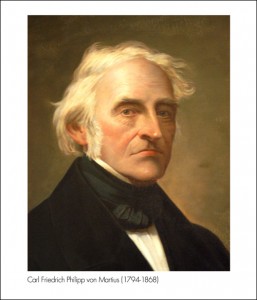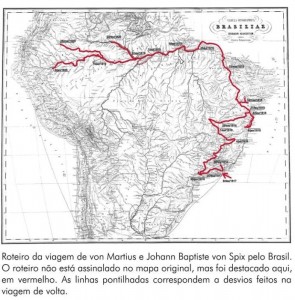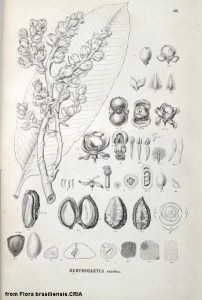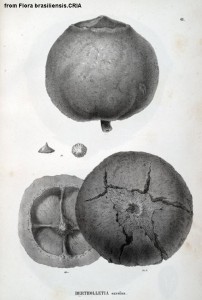Flora Brasiliensis: How a 19th-Century Flora Continues to Inspire
Posted in Science on May 2 2013, by Scott Mori
Scott A. Mori is the Nathaniel Lord Britton Curator of Botany at the The New York Botanical Garden. His research interests are the ecology, classification, and conservation of tropical rain forest trees. His most recent book is Tropical Plant Collecting: From the Field to the Internet.

Botanist Alex Popovkin was inspired to carry on the tradition of botanical field work–photographing and collecting plants in Brazil–by one magnificent book , Flora Brasiliensis.
In 1817, the German botanist Carl Friedrich Philipp von Martius traveled to Brazil with zoologist Johann Baptist von Spix as part of the wedding party of the Archduchess Leopoldina of Austria. The Archduchess had married the Brazilian Emperor Dom Pedro I, and the naturalists attached to her party were part of her dowry arrangement. Martius and Spix started their natural history explorations in the vicinity of Rio de Janeiro and traveled some 10,000 kilometers in Brazil.

After an arduous overland trip, they arrived in Belém in 1819 and spent 11 months exploring the Amazon, reaching as far at the Río Caquetá in Colombia. Although the Amazon had been opened to international commerce in 1808, regular steam ship transportation on the river was not established until 1867, and Martius and Spix had to depend on paddlers, the wind, and the tide on the lower reaches of the river for movement from one collecting locality to another. This trip would be the basis of the most productive early natural history exploration of the Brazilian Amazon.
Upon his return to Germany in 1820, Martius was carrying with him 20,000 botanical specimens which served, and continue to serve, as the basis for countless botanical studies, including Flora Brasiliensis which remains the only published complete flora of Brazil to this day. This monumental work was started in 1840. The first volume was published in 1845, and the last completed in 1906.

Seventy-five botanists from around the world dedicated part of their careers to the project which comprises 40 volumes, 20,773 pages, 3,811 pen and ink plates, and 1,071 lithographs. Nearly 23,000 species are treated, of which 5,939 are described as new to science. This expensive and time-consuming undertaking would not have been possible without the support of Ferdinand I, Emperor of Austria; Ludovic I, King of Bavaria; and Dom Pedro II, Emperor of Brazil. Martius himself edited the first volumes. After his death in 1864, August Eichler, and then Ignatius Urban carried on with the project until its completion.
Martius was accompanied by artists who illustrated the plants he encountered on his expedition, including the illustrations seen here of the Brazil nut, Betholletia excelsa. Botanical line drawings, such as those prepared by Bobbi Angell, continue to be the most informative way to allow others to understand the features of plants. Alex Popovkin was inspired by Flora Brasiliensis to carry on this tradition of botanical exploration, but instead of line drawings Alex captures the characteristics of plants with digital photography. Either way, the goal remains the same, and today’s technology enables modern botanists–who may not have the ability or resources to prepare drawings–to communicate plant details in a new way.

Martius published several other works on the plants of Brazil as well. In Nova Genera et Species Plantarum Brasiliensis, Martius described approximately 70 genera and 400 species as new to science. Like most botanists who visited the Amazon, palms in particular attracted his attention, and he spent nearly thirty years studying them. He described hundreds of new species of palms in his Historia Naturalis Palmarum (1823-1853). The first part of this monumental work included current knowledge on palms from all over the world and was one of the first attempts to provide a classification of the family. In the second part of Historia Naturalis Palmarum Martius described and illustrated with lavish color plates the palms he had observed in the Amazon, including 85 as new species, 54 of which are accepted by The Palms of the Amazon (1995) by the NYBG’s own Andrew Henderson. Nevertheless, it was Carl Georg Oscar Drude, not Martius, who published the treatment of the palms for Flora Brasiliensis in 1881 and 1882, some 17 years after Martius died.


This is a very interesting article about Flora Brasiliana which was produced in the 19th century. My question is why, since so much more has been discovered in Brazil since this Flora was written, that this is the only complete Flora of Brazil. It seems strange that someone has not updated it.
I look forward to your answer.